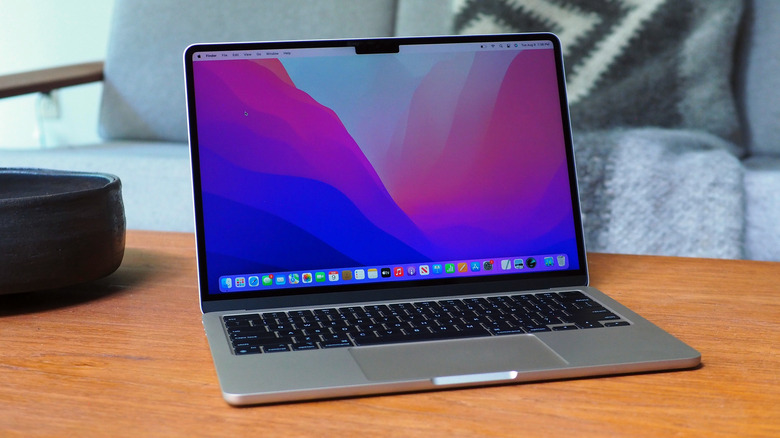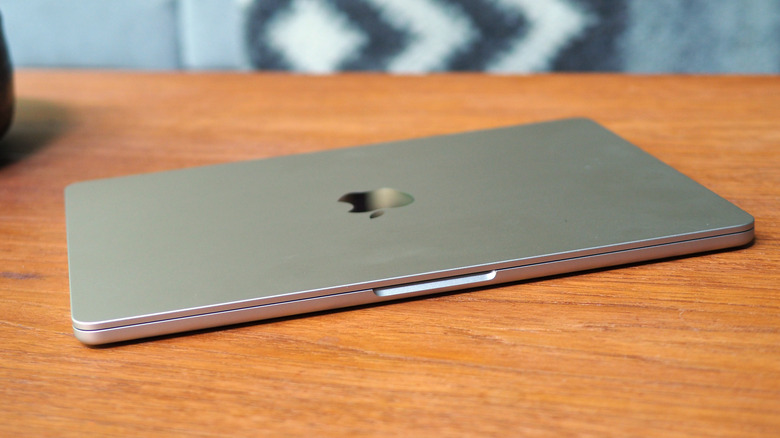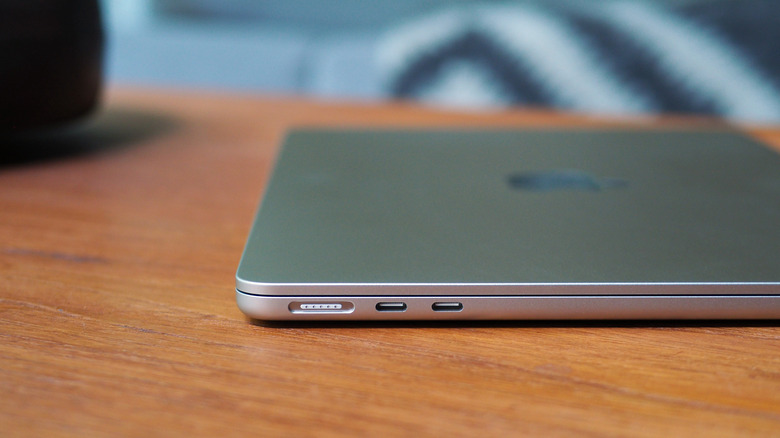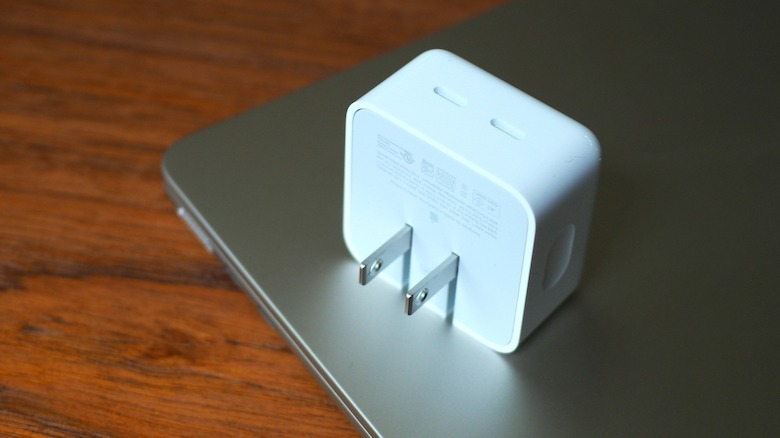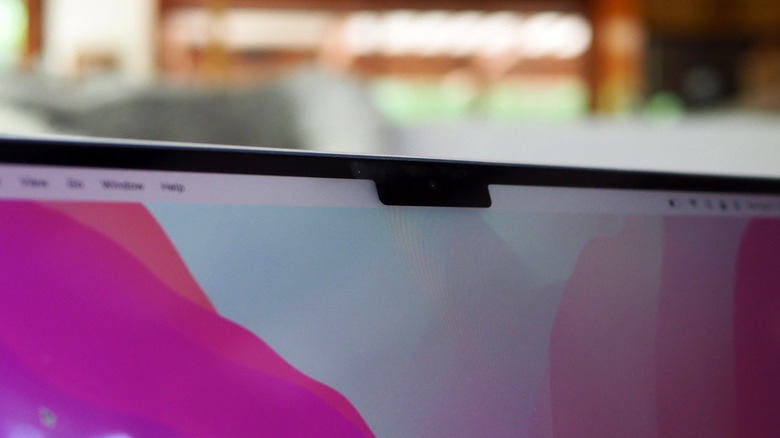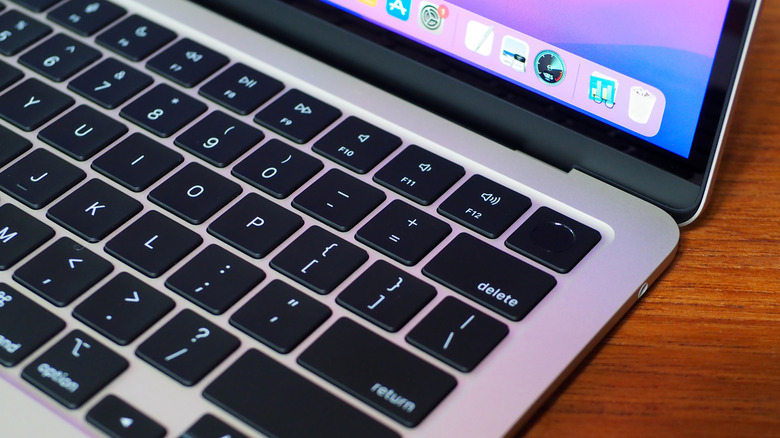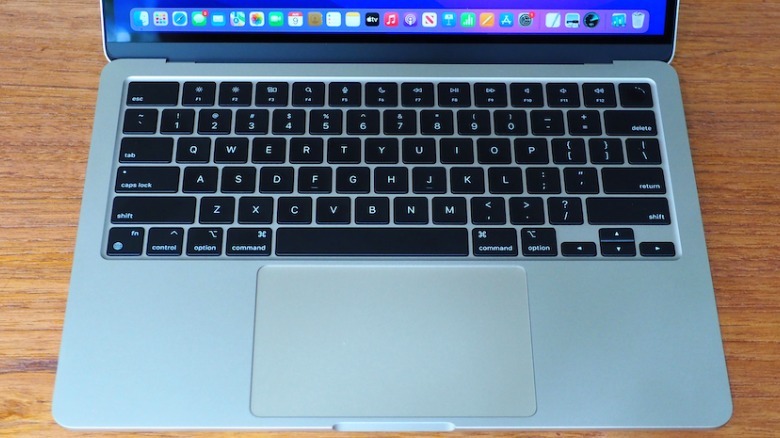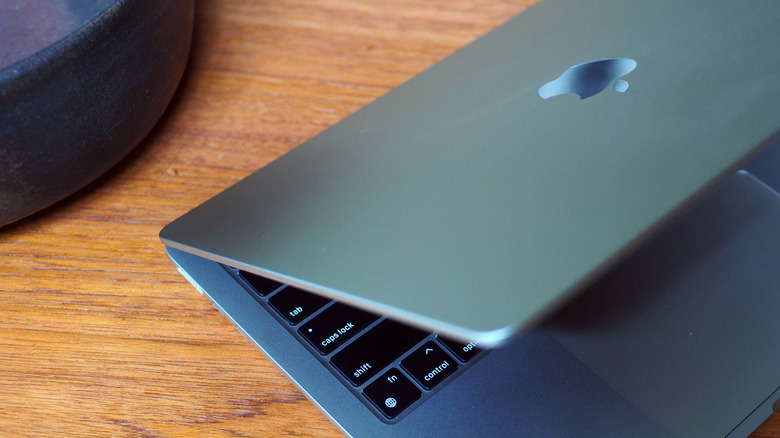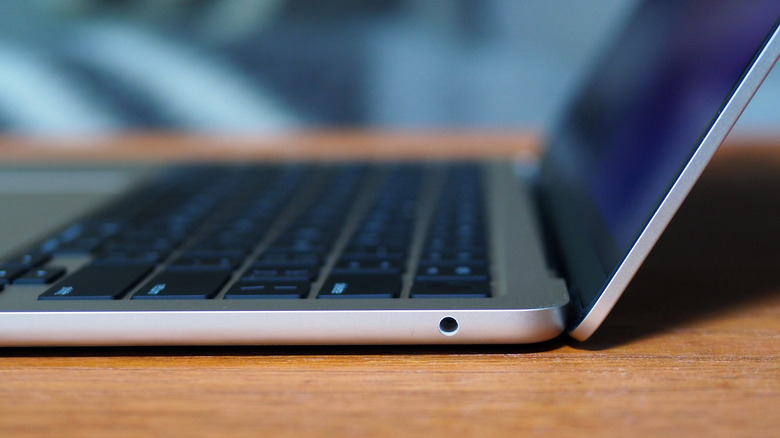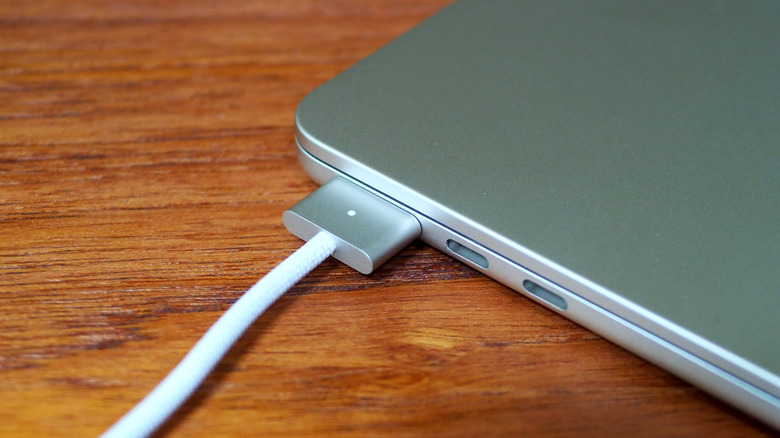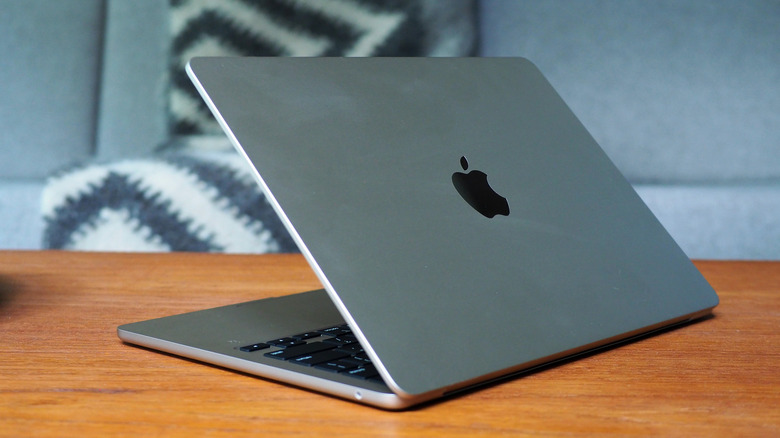Apple MacBook Air M2 (2022) Review: Setting The New Benchmark
- Sleek style packs potent M2 chipset
- Lengthy battery life
- Great display
- Welcome return of MagSafe charging
- Gets expensive when you add memory and storage
- Display notch could be frustrating
- Only official support for one external display
We may receive a commission on purchases made from links.
The previous-generation MacBook Air M1 was a game-changer. One of the first notebooks to switch to Apple Silicon, it was a comprehensive shutdown to anybody who dared to doubt the Cupertino firm's ability to design its own Mac chips. The resulting ultraportable wasn't just competitive with Intel's processors, it capably leapfrogged them and set the stage for two years of upgrades across Apple's computing portfolio.
Now, with that transition in full swing, attention refocuses on what for many is their point of entry into Mac ownership. Where the Air M1 hid its updates inside a familiar design, the MacBook Air M2 retires that in favor of a whole new look that borrows from the more expensive notebooks we've seen Apple produce over the past couple of years. That includes an extra color option, with an inky Midnight finish joining the Starlight, Space Gray, and Silver.
A new look to go with the new Apple M2
I've been relatively unstinting with my praise for the 14-inch MacBook Pro, with Apple's high-end M1 series of Apple Silicon chips. Potent enough to assuage any need you might feel for a desktop Mac, it also marked a welcome return of some long-absent ports in addition to a neatly massaged design.
The new MacBook Air follows suit with an aesthetic revamp, and for the first time, this is no tapering wedge. Instead, 2022's Air feels a lot like a Pro that has been squashed down: a consistent 0.44 inches thick from front to back, to go with its 2.7-pound weight. That's actually ever so slightly lighter than the M1-based Air, which remains on sale as Apple's entry-level model complete with the M1 chipset.
While the wedge Air may be thinner at its narrowest point, the 2022's flatter model feels more slimline overall. Switching out the MacBook Pro in my bag, the advantages were particularly clear. The screen size may not be much different, but at 3.5 pounds the 14-inch Pro is noticeably heftier to carry around all day.
Some port improvements, but not all of them
Apple has, of course, taken advantage of that Pro scale to include a full-sized SD card slot and a regular HDMI port, something that the 2022 MacBook Air M2 must do without. Instead, you get two Thunderbolt/USB 4 ports on one side and a 3.5mm headphone jack on the opposite. MagSafe 3, Apple's clever magnetically-clinging power jack, is added too.
It makes a bigger difference, here, since with the old Air you needed to use one of its two data ports for charging (though you can still do that here, too). Apple is also offering a choice of more flexible chargers, assuming you cough up for the higher-spec Air models. While the basic version packs 30W and a single USB-C port, there's also a 35W version with two USB-C ports — so you can charge, say, an iPhone as well as your laptop — and a single-port 67W charger that trims a 50% top-up to just 30 minutes.
Generally, though, the port situation is pretty consistent with the old Air: no improvements in data speed, here. You can plug in a single display — at up to 6K/60Hz resolution — but no more than that. Depending on the chipset in your MacBook Pro, that laptop will drive up to four external screens.
A great screen, even with a notch
That's in addition to the 13.6-inch Liquid Retina panel on the MacBook Air itself, slightly taller than the old Air design. As on the latest Pro models it has rounded corners, and it's slightly brighter too: up 100 nits, to 500 total. It's a nice screen, though I missed features like ProMotion refresh for smoother scrolling and transitions. That's saved for the MacBook Pro, as is Liquid Retina XDR Mini LED panel tech with its improved contrast and more saturated colors.
Most controversial, I suspect, is the notch. Apple has finally upgraded the webcam, now clocking in at 1080p resolution rather than the dire 720p version on the old Air, and it makes a noticeable difference for video calls. Problem is, with the skinnier bezels, it also demands a cut-out in the top center of the laptop's screen.
I'll level with you, I don't care about the notch. I didn't really care about it on the iPhone, or on the MacBook Pro 14 released last year, and after a couple of minutes I stopped noticing it on the new MacBook Air M2, too. If your status bar is overflowing with icons then yes, the notch might cause some issues, but this definitely feels like one of those times where the furor is outsized compared to the actual issue.
If you do care then I suspect you have a problem, as I can't see Apple switching away from this design any time soon. Maybe it would be easier to stomach if it used the notch for a Face ID camera, and allowed for facial recognition login as the iPhone does. Instead, we get a Touch ID sensor integrated into the power button on the top right of the keyboard.
A typist's keyboard
That keyboard uses the same switches as in the MacBook Pro 14, but with a body-color tray rather than the black of the more expensive notebook. It means full-height function keys, which I know some people feel strongly about, but more importantly it also shifts away from the old "Butterfly" mechanism which has caused Apple so many problems. I liked how those keys felt, even if they were loud in use, but given how many keyboards broke it's no bad thing that the tech has been retired.
Hidden between the keyboard and the display are the MacBook Air's speakers. I was skeptical, at first, that it would deliver the same sort of volume and audio quality as Apple's notebooks with more obvious grilles, but it's actually pretty impressive. A Pro definitely has more bass, but there's more than enough punch here for music or to annoy fellow patrons in a coffee shop when you take an impromptu FaceTime call.
The Apple M2
As we've seen elsewhere in the Apple Silicon roll-out, not all identically-named versions of the homegrown Cupertino chips are necessarily the same. In this case, there are two versions of the Apple M2, differing primarily when it comes to graphics.
The $1,199 entry-level notebook gets an 8-core CPU — consisting of four performance cores and four efficiency cores — along with an 8-core GPU and 16-core Neural Engine. Step up to the $1,499 configuration (or add it as a $100 custom option on the entry model) and you get a version with a 10-core GPU.
Either way, there's 100 GB/s of memory bandwidth and a media engine with hardware acceleration for the common video formats. Apple might point users wanting to do video editing toward their MacBook Pro series, which pack an uptick in graphical prowess among their other advantages, but the MacBook Air M2 isn't all at sea if you need to crunch through an iMovie project of a family vacation or school play.
The big configuration question
As for memory, the standard configuration gets 8GB of what Apple refers to as "unified memory": RAM that's shared between the CPU and GPU. 16GB or 24GB are optional, a $200 or $400 upgrade respectively. While that may seem low compared to what Windows PCs typically come with, the argument is that by sharing the memory, macOS can use it more effectively.
If it does run out, of course, it'll start using the Air's SSD storage, and there things get interesting. The entry-level model uses 256GB, upgradable to 512GB, 1TB, or 2TB. I'd probably skip the two largest sizes — which can add as much as $800 to your configuration — but the 512GB version seems like it would be worth it. Because of the SSD Apple has used, a single 256GB chip rather than a pair of 128GB, performance will be down compared to the twin 256GB in my 512GB review machine.
In Geekbench 5, which tests general performance, the MacBook Air M2 scored 1,932 in the single-core test, and 8,959 in the multi-core test. Ahead compared to the M1, certainly, though not the groundswell leap that we saw going from Intel Air to Apple Silicon. As for the SSD, the Blackmagic Disk Speed test clocked in at around 2,850 MBps for reads and 2,200 MBps for writes.
Different laptops for different folks
Performance is a juggling act with the MacBook Air, as unified memory, flash storage, the M2 chipset, and the fanless design all attempt to deliver speed without overheating (or burning your legs). Push the notebook hard and, with no active cooling onboard, the base gets toasty — though never uncomfortably so — and eventually the Apple M2 will throttle back accordingly. Processor throttling isn't unique to Macs, of course, but you can expect it to happen sooner here with high-intensity workloads than, say, in a 14-inch MacBook Pro that has a fan.
Were it my money, then, I'd push the boat out and opt for 512GB of storage and 16GB of unified memory, and loosen two of the most obvious potential bottlenecks (not to mention leaving me feeling a little happier about future-proofing a non-user-upgradable laptop). That would take the Air to at least $1,599 though, and still leave me with the 8-core GPU.
Would you be at a marked disadvantage — or outright disappointed — if you went with the cheapest new MacBook Air? Or, for that matter, if you only upgraded storage, or memory, but not both? For most users, needing a laptop that can smoothly handle internet browsing, media playback, messaging and emails, and the usual brace of productivity tasks that working-from-home generally includes, there's more than enough grunt here to deliver.
The same goes for battery life, where Apple suggests the new MacBook Air is good for up to 15 hours of web browsing over its WiFi 6 connection. In practice, jumping between apps than just Safari, I managed 10-12 hours. It's pretty much in line with the old, M1-based Air.
Apple MacBook Air M2 Verdict
It's clear that Apple has done more than just change the external look of the new MacBook Air, though some of my lingering frustrations do remain. The absence of an embedded 4G/5G modem, for example, and the fact you're limited to a single external display. Apple's miserly reluctance to drop a USB-C to USB-A adapter in the box also continues to rankle.
Nonetheless, the refinements here compared to the old Air are notable — and compelling. Screen, performance, and usability all improve, without sacrificing battery life. While you could opt for the lingering Air M1 and save some money, only those on the tightest budget should really consider that. There's just a lot more to enjoy here.
As for "power users" they, unsurprisingly, should be shopping in Apple's MacBook Pro aisles. If you're regularly doing video editing, want to play games, or do graphically-intensive tasks, the M1 Pro and M1 Max chips are still markedly ahead. For the rest of us, who just want macOS on something sleek, silent, and highly portable, the 2022 MacBook Air M2 delivers that in spades.
